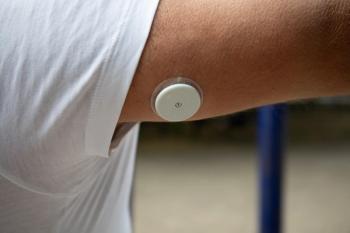
Virtual Care Can Help Prevent Spread of COVID-19
The United States now has more than 100 confirmed cases and 10 deaths, according to the CDC.
Not only can virtual care platforms and telehealth prevent the spread of the novel coronavirus (COVID-19) by keeping people out of waiting rooms, experts say it can also ensure a consistent screening process for all patients.
The United States now has more than 100 confirmed cases and 10 deaths, according to the CDC. Washington State and California each have over 30 cases confirmed by the CDC, while Oregon, Arizona, Florida, Georgia, North Carolina, Wisconsin, Illinois, New Hampshire, New York, Massachusetts, and Rhode Island all have between 1 and 5 confirmed cases.1
The illness is believed to spread mainly via person-to-person spread and through respiratory droplets produced when an infected person coughs and sneezes. While people are believed to be most contagious when they are symptomatic, some spread may be possible before people show symptoms. Furthermore, it may be possible to transmit COVID-19 by touching a surface or object that has the virus on it.2 For all of these reasons, experts are concerned about the dangers of health care facilities and the risk of continued spread of the virus.
Telehealth Could Slow the Spread
In an interview with Pharmacy Times, Lisa Ide, MD, MPH, chief medical officer of Zipnosis, said physicians should be using telehealth to treat as many conditions as possible, and to keep patients out of urgent care facilities.
While she wasn’t too concerned when the virus was only being seen in cases imported from other countries, now that community spread is occurring Ide said she’s more concerned.
“That really opens up the possibility of widespread illness in the United States,” she said.
Ide explained that the term “telehealth” can include video services and telephone calls, but “virtual care” is primarily asynchronous. Patients answer a structured series of questions that adapt depending on their answers, and the information is then delivered to the provider.
The Zipnosis patient questionnaire includes the CDC screening questions as well as public health messaging, which Ide said can be vital for patients trying to understand the COVID-19 outbreak, and how they should react.
Not only does it keep potentially sick patients out of germ-filled waiting rooms, Ide said, but it is also time- and cost-efficient. Of the 270,000 virtual care visits using Zipnosis in 2017, Ide said the average provider time was 1 minute and 29 seconds.
Patients who answer positively to the screening questions would then be sent to the nearest testing facility or told to self-quarantine if their symptoms are not severe, according to Ide.
CDC Expands Testing Criteria
In response to concerns that CDC diagnostics were previously only available to those who had traveled to Wuhan, China, or been in contact with a confirmed case of COVID-19, the CDC has announced expanded criteria for evaluating persons under investigation to include anyone showing symptoms.3
Nearly all states now have at least 1 laboratory currently able to test for the virus. Wyoming, Oklahoma, Alabama, Ohio, West Virginia, and Maine are all in the process of obtaining and implementing the CDC-developed diagnostics.1
According to the CDC, clinicians’ decisions on which patients receive COVID-19 testing should be based on the local epidemiology of COVID-19 as well as the clinical course of illness. Clinicians are still strongly encouraged to test for other respiratory illnesses, including influenza.3
Globally, more than 93,000 infections have been confirmed with nearly 3,200 deaths. The World Health Organization has raised the global risk assessment to “Very High.”4
Prevention recommendations still include avoiding close contact with those who are ill, avoiding touching your face, remaining at home when sick, and covering coughs or sneezes with a tissue. Surfaces and objects should be frequently disinfected.5
The CDC does not recommend wearing a face mask for prevention purposes. Masks should only be used by people who show symptoms of COVID-19, or by health care workers and caregivers.5
For pharmacists, Ide stressed the importance of staying up-to-date with CDC recommendations and announcements, especially because they will frequently change as the situation progresses.
“Pharmacists are an essential part of our health education system, and they will certainly be pressed into service to answer many coronavirus questions,” Ide said.
REFERENCES
- Coronavirus Disease 2019 (COVID-19) in the US. Centers for Disease Control and Prevention; updated March 5, 2020. https://www.cdc.gov/coronavirus/2019-ncov/cases-in-us.html. Accessed March 5, 2020.
- How COVID-19 Spreads. Centers for Disease Control and Prevention; last reviewed March 4, 2020. https://www.cdc.gov/coronavirus/2019-ncov/about/transmission.html. Accessed March 5, 2020.
- Evaluating and Reporting Persons Under Investigation (PUI). Centers for Disease Control and Prevention; updated March 4, 2020. https://www.cdc.gov/coronavirus/2019-ncov/hcp/clinical-criteria.html. Accessed March 5, 2020.
- Coronavirus disease 2019 (COVID-19) Situation Report 44. World Health Organization; March 4, 2020. https://www.who.int/docs/default-source/coronaviruse/situation-reports/20200304-sitrep-44-covid-19.pdf?sfvrsn=783b4c9d_6. Accessed March 5, 2020.
- Prevention & Treatment. Centers for Disease Control and Prevention; last reviewed February 15, 2020. https://www.cdc.gov/coronavirus/2019-ncov/about/prevention-treatment.html. Accessed March 5, 2020.
Newsletter
Stay informed on drug updates, treatment guidelines, and pharmacy practice trends—subscribe to Pharmacy Times for weekly clinical insights.

















































































































































































































